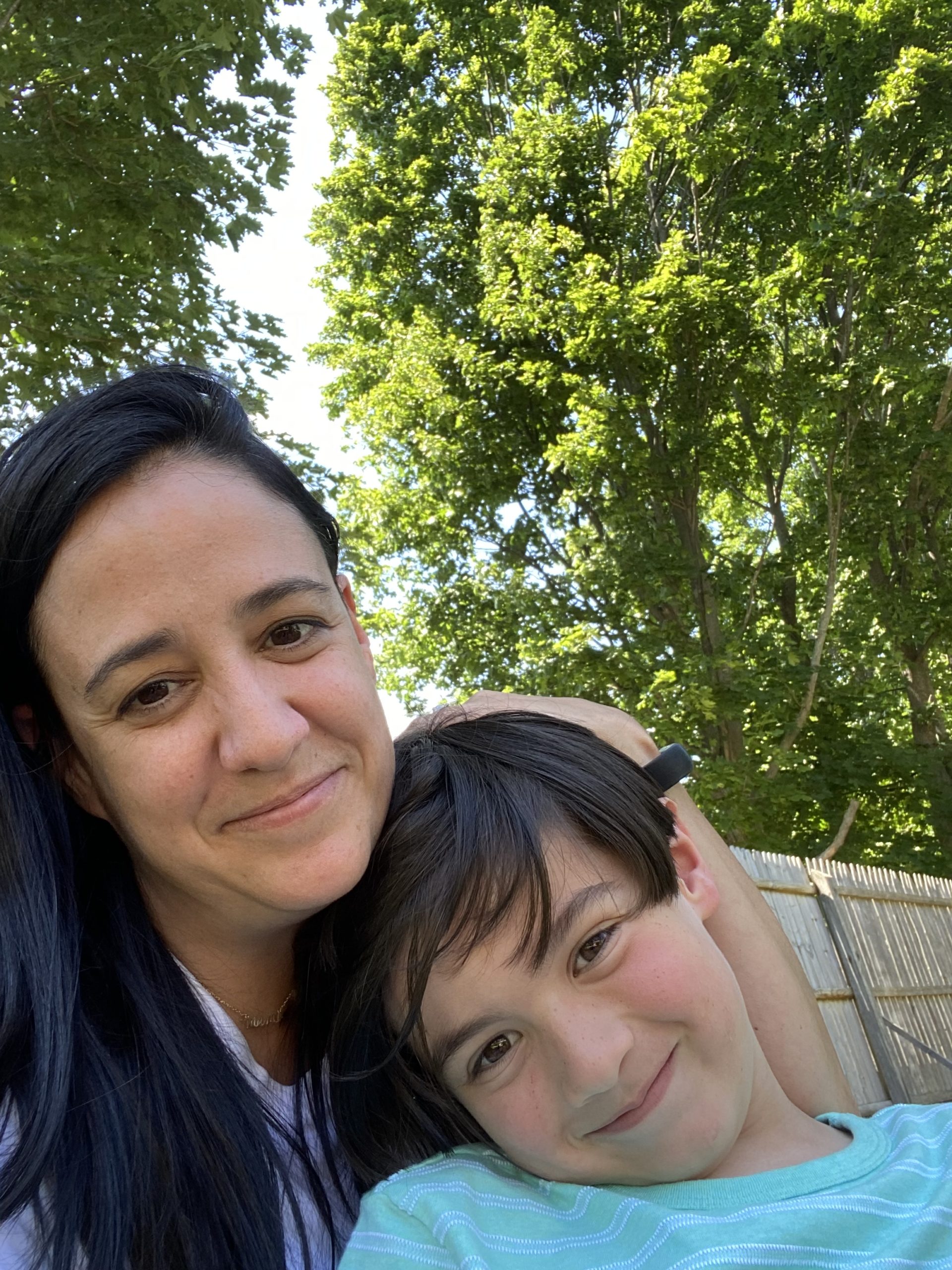2 minute read
Portsmouth, NH
I have been engaged in a more or less continuous conversation with certain high-performing Entrepreneur Owner-Managers about their ambivalence toward moving their enterprise along to its next majority owner to assure the sustained success of it (beyond themselves). Many struggle with issues of head and heart: “My heart says I love this thing I have created, and don’t want to give it up. My head says my life is finite, so my leadership is finite, and it’s responsible to all stakeholders to help move this enterprise I’ve created on to its next logical chapter of leadership and ownership”.
So… what holds us back from moving our enterprises and ourselves to the next exciting chapter with the same enthusiasm that we started on this journey?
The. Fear. Of. Being. Unneeded?
Most high performing EOMs have been so needed, for so long, by so many (by their enterprises, their families, their not-for-profit causes, their communities) that the concept of being unneeded is an unfamiliar one. It’s tricky though.
Arthur Brooks expresses this dilemma as the Principle of Psychoprofessional Gravitation: (paraphrasing) “The idea is that the pain of professional transition is directly related to the loftiness of professional achievement, and to one’s emotional attachment to that achievement. Problems related to achieving professional success might appear to be a pretty good species of problem to have; even raising this issue risks seeming precious. But if you reach high performing EOM heights and are deeply invested in your achievement, you can suffer mightily when you inevitably transition away from your creation.”
Fear is the mother of all emotions, right? Research shows it crowds out all other emotions, positive or negative (and with good evolutionary reasons). So, fear of being unneeded crowds out its antidote, which is re-purpose.
To be needed can be viewed as kind of an asset, in the same sense that to be unneeded is a liability. The absence of being needed can sometimes even feel like an absence of dignity. But when it crosses over to “I am irreplaceable,” that is most often a crutch for avoiding the hard internal self-work or result in not engaging with it at all. It is one thing to be needed by other people, but making yourself indispensable, or irreplaceable might be a form of neurosis.
We know that above all else, achieving sustained Entrepreneur Owner-Manager success is an act of creativity. As a creative, where’s it written you have to spend your life on the same canvas? When did it become a life sentence?
Can you, as an entrepreneur, model your upcoming life transition as a kind of new startup (of you)? What Unique Ability have you honed in the last chapter? Where does it bring value in the next one? Living your purpose is hard work. Re-purpose might even be harder as it requires you to move away from what you deemed as your sole purpose and to try to do it again. Changing your purpose from the one that has served you so well for so many years is daunting. But why ignore a chance to de-clutter? What an opportunity to lose your office, declutter your mind, your activities, your relationships, your economic life? What an incredible freedom this could create.
One of the biggest life challenges I see for professionally successful people is attempting to sustain peak accomplishment indefinitely. This is impossible. Transitions are inevitable. We’d better use them—they can unlock new potential.
Is it the fear of being unneeded that’s holding you back? Okay. Will you do the important internal work to get unstuck now with as much positive energy and enthusiasm as you started out on this entrepreneur journey all those years ago? If you do, isn’t it exciting to dream about what may live on the other side?
What I am Reading / Listening to
Formula One: The Drive to Survive (2019)
Directed by James Gay-Rees, Paul Martin, and Sophie Todd
Contributed by Stephen R. McGee
Growing up as a kid in England it was not hard to be absorbed by Formula One racing. The Brits have a long history with the sport and have produced a slew of great drivers over the years: Jim Clark, Graham Hill, Stirling Moss, Jackie Stewart, and today, Lewis Hamilton.
So, I was naturally drawn to the Netflix documentary series Formula One: The Drive to Survive. Now in its third season, the ten episode show chronicles the behind-the-scenes drama of the Formula One season. 10 teams (constructors1) and 20 drivers competing in 23 races around the world for the constructors and drivers’ titles, respectively. With top speeds in excess of 200mph and peak cornering forces near 6.5 lateral g, the onboard camera footage from the race car itself is nerve-racking, even from the comfort of your sofa.
If you’ve never seen the show, it’s worth going back to Season 1 which covers the 2018 World Championship. This will give you a chance to get to know the teams and the individuals: the drivers, the team managers, and the owners, that take center stage. The most current season, season 3, takes place in 2020 and gives you a fascinating real-time view of how the COVID-19 pandemic impacted one the world’s largest spectator sports (it is estimated that cumulatively over 50 billion people tune in to watch Formula One over the course of the season).
Formula One is BIG business. It’s expensive to run a team (many a billionaire has squandered hundreds of millions of dollars on the sport), but the enormous fan base and sponsorship dollars can bring in the big bucks for the most successful teams and drivers. For the less successful teams it’s a struggle.
This Netflix original is really well produced. The all-access behind the scenes footage and interviews really give you an insight into the sport. The technology is truly impressive. While these Formula One cars look more like sophisticated fighter jets than cars, ultimately, it is very much a human story. The competition between and within teams (there are two drivers per team), the pressure on the team managers to be successful, the pressure on the drivers who risk their lives every time they go out on the track, and the pressure on the owners to keep financing their teams, successful or not.
As you might imagine these Formula One drivers are very much A-type personalities who want to win at all costs, but when there is a big crash, it’s interesting to see how quickly they switch to being a brotherhood, the voices can be heard all over the on-board radios as they ask their teams back in the pit area “who is it, is he ok?”
Two other feature length documentaries on the sport that are also well worth watching are 1: Life on the Limit which traces the history of the sport all the way back to its early years; and Senna, the story of the great Brazilian driver, Ayrton Senna who died aged 34 after succumbing to fatal injuries sustained during the San Marino Grand Prix, on 1 May 1994 – a race I was watching live on TV, back in England, as a 13 year-old boy.
1Note: A Formula One constructor is the entity credited for designing the chassis and the engine. If both are designed by the same company, that company receives sole credit as the constructor (e.g., Ferrari). If they are designed by different companies, both are credited, and the name of the chassis designer is placed before that of the engine designer (e.g., McLaren-Mercedes). All constructors are scored individually, even if they share either chassis or engine with another constructor (e.g., Williams-Ford, Williams-Honda in 1983).
Entrepreneur Owner-Manager Quote
“Bigelow expertly handled the transaction negotiation and closing, but what was most important to me was that Bigelow maintained constant candid transparent communication with the non-employee family members, so we had confidence in the decisions we were asked to make.”
-Mary Ellen Bennett Tetreau, Shareholder, Oakhurst Dairy
Energy Creation
Contributed by Mari B. Lister
For our family, the (un)official start of summer began last week. Our eight-year-old finished 2nd grade.
For some reason, our son turning 8 along with the culmination of this last school year felt much heavier than those of the past few years. It has been rough one for all of us, hasn’t it? But wow, what these kiddos have gone through has been epically difficult.
Our eldest is on the spectrum, and the challenges he faced this year were some of the biggest he has had to date. Remote learning was a joke and a real emotional strain on his sensitive psyche. The inconsistency of flopping back and forth between remote learning, then partially in school, then back to remote, to finally finish off with a few weeks of full time in person was a rollercoaster he was not equipped to deal with (and frankly neither was his mother!). I do not intend to have this piece be a critique of how the schools handled this pandemic – I know they were in a lose-lose situation.
What inspired me to write this brief note was that fact that I have never been happier about a transition / start of a new season more than I have about the start of this summer. Knowing that my kiddo will have his “normal” back fills me with a joy I had not expected. This summer I am not stressed about the camp logistics, vacation planning, or a million other things that are usually on my summer to do list. This summer I am simply excited (almost like when I was a kid) to think about the freedom my kid will have. Freedom to not wear masks. Freedom to run barefoot in the sunshine until the soles of his feet are black with dirt. Freedom to hug his friends (and sometimes shove them as well! If you have ever had young boys, you know!). Freedom to do nothing. Simply, the freedom to be the child he is supposed to be in all its glory and simplicity. They say you never regain the simplicity of when you were a kid, but this summer I vow to regain just a bit of it, as I relive it through, and with my child. I think we actually may both deserve it!




